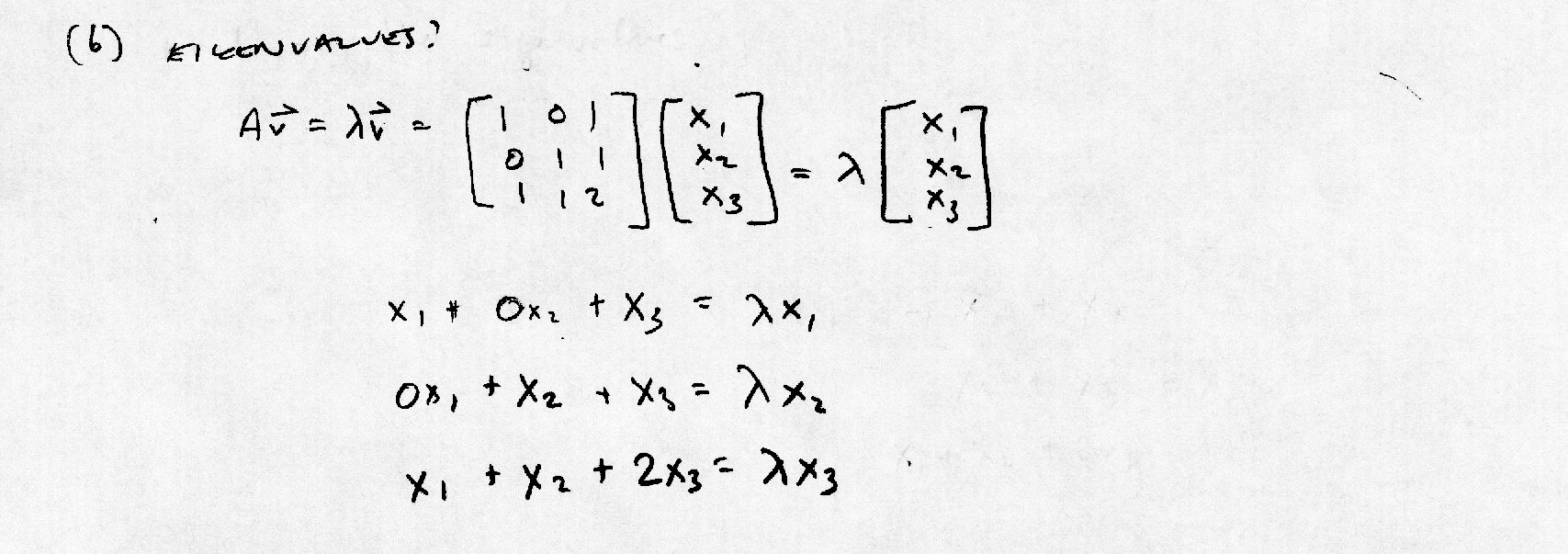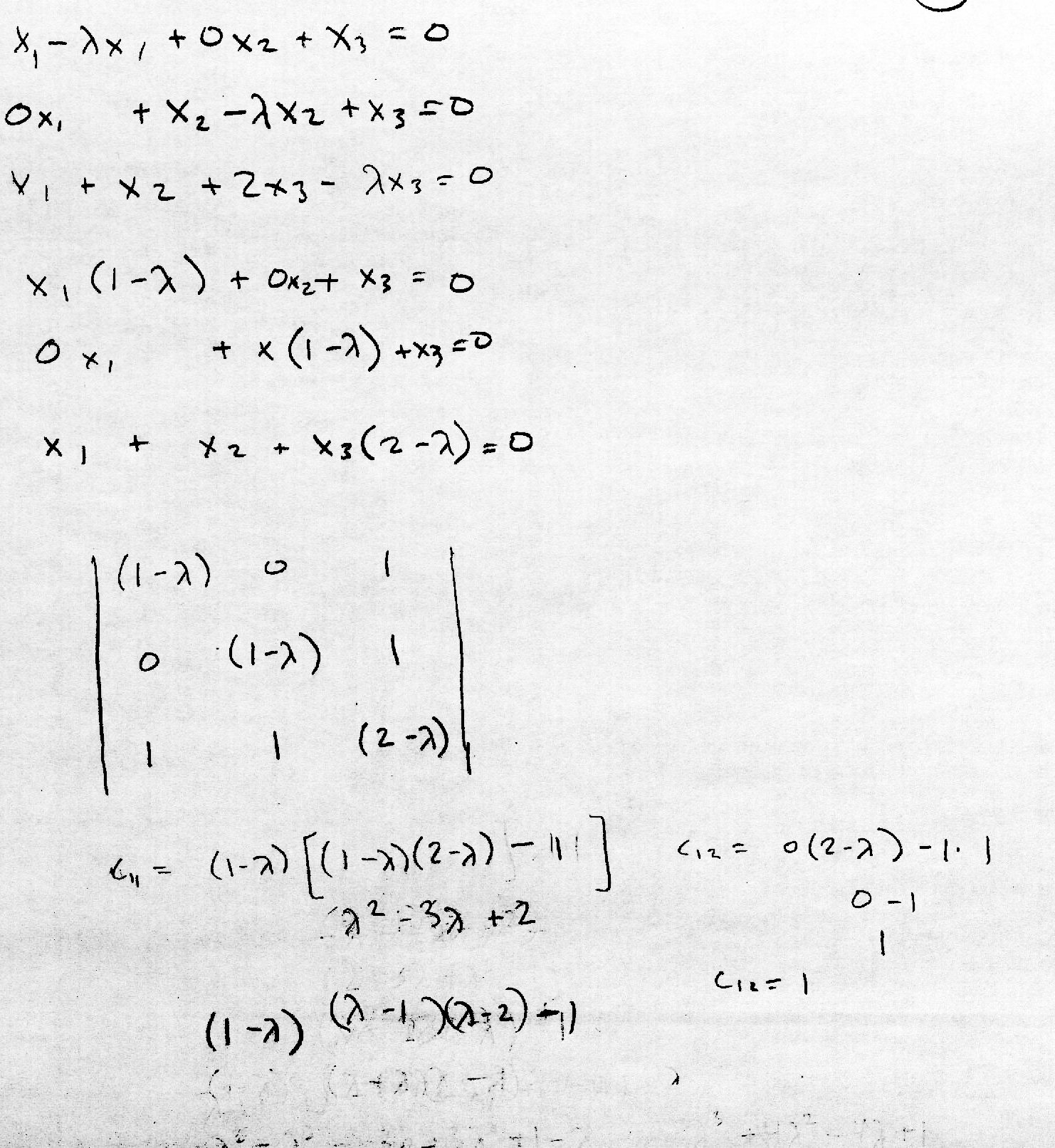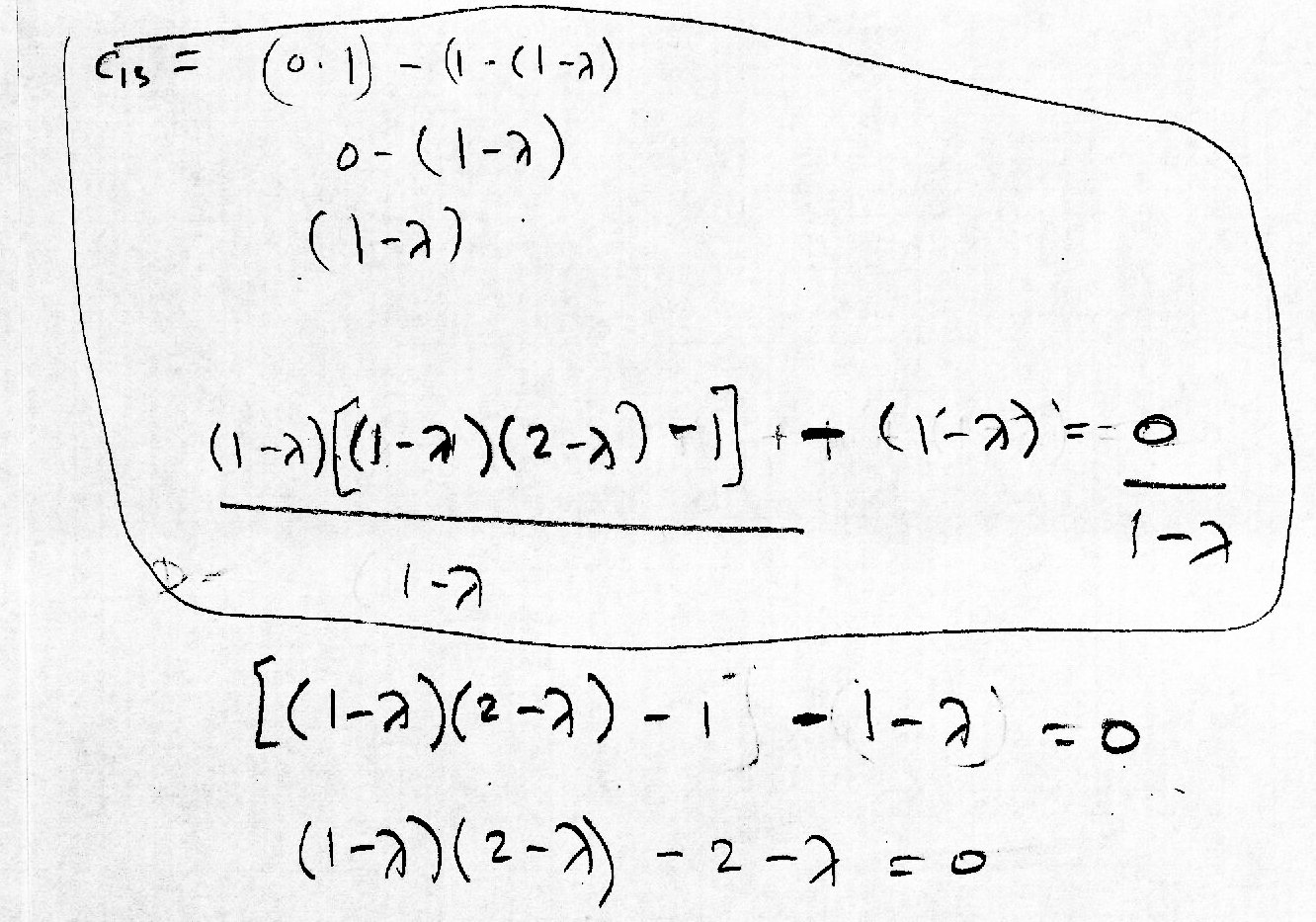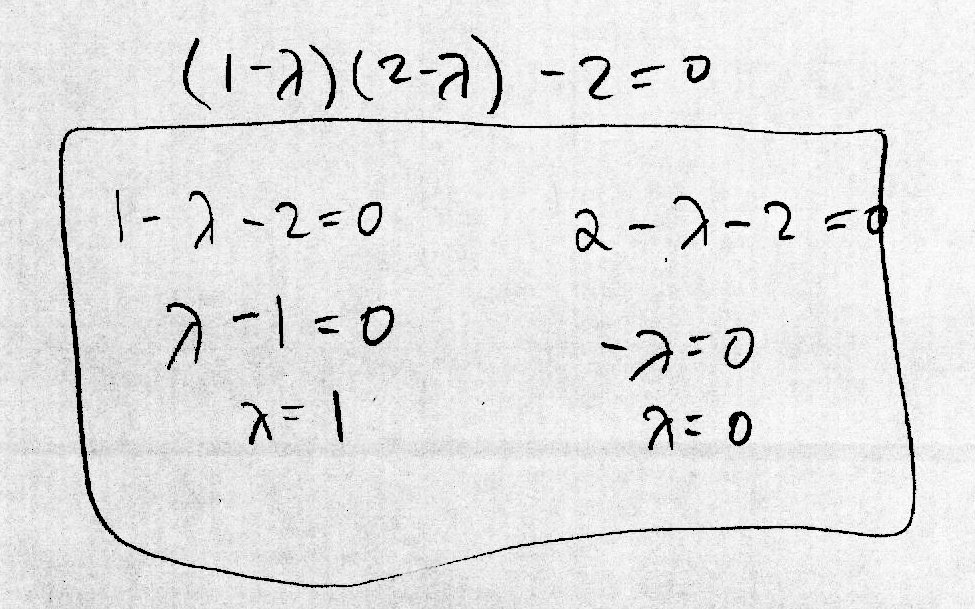Transforms
|
Calculate the inverse wavelet transform, using Daubechies fourth-order coefficients, of a vector of length 2^12, with a 1 in the 5th and 30th places and zeros elsewhere. My solution in python: daubTest3.py (a) Analytically calculate the covariance matrix of a three-component vector x. First, I set up the vectors with zero mean and unit variance and then form the covariance matrix: (b) What are the eigenvalues? Solving the eigenvalues that satisfy the equation of a square matrix times the eigenvector and a scalar: Rearranging the equation in preparation to solve the determinant of the coefficient matrix: There are three scalar values, which means that there are three eigenvalues of the original matrix: The eigenvalues are 1, 0, and 3: (c) Numerically verify these results by drawing a data set from the distribution and computing Values of vector x: Covariance of x: Eigenvalues of x: Source code: num-cov.py |







